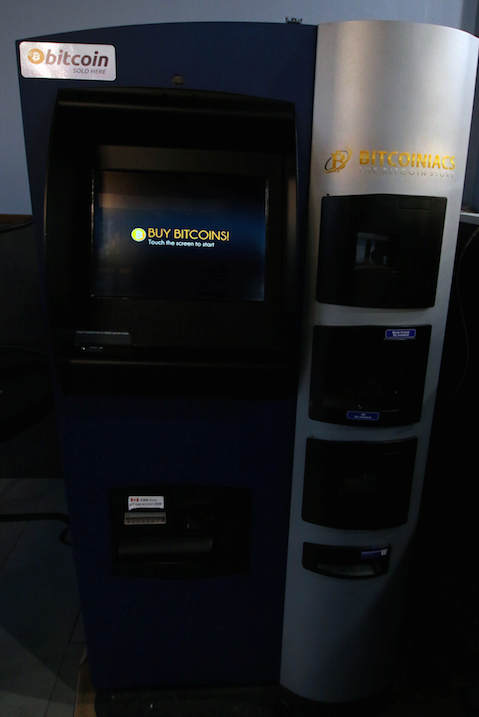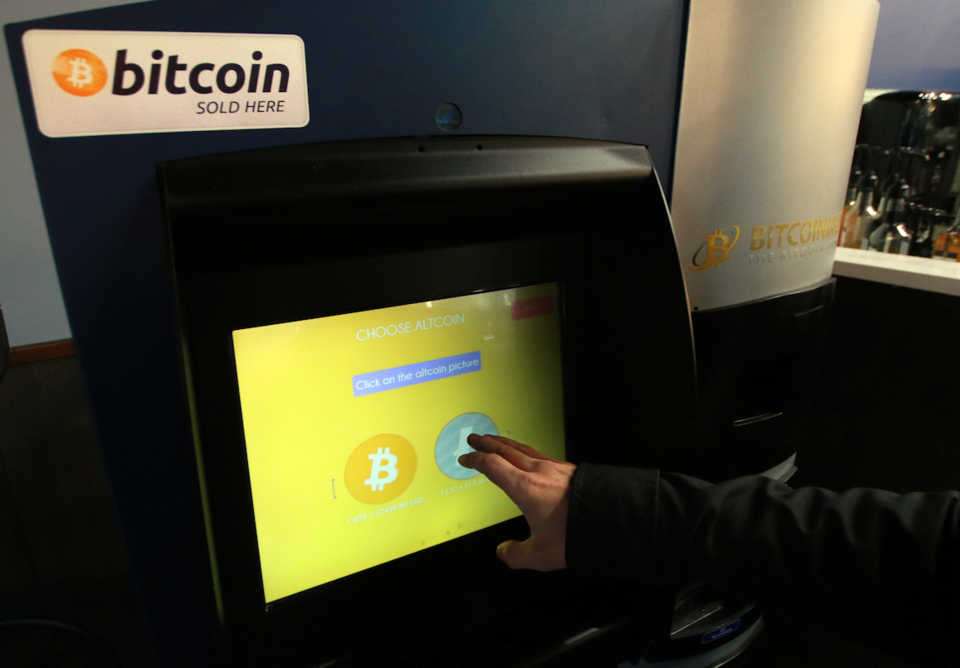Bitcoin’s value soared approximately 20-fold in 2017 to more than US$18,000, but few people who own the cryptocurrency are using it as a currency.
Instead, they use it as an alternative asset class investment and a way to store value. That’s in part why Bank of Canada governor Stephen Poloz last month called Bitcoin a “so-called cryptocurrency.” He also suggested that buying it was more akin to gambling than investing.
Most Metro Vancouver retailers and owners of service businesses that years ago accepted Bitcoin have either gone out of business or stopped accepting Bitcoin. Those who still accept the alternative payment method have not logged any transactions in more than a year.
One of the main problems associated with using Bitcoin as a currency, say Bitcoin experts, is that transaction fees have skyrocketed, sometimes to more than $100. That is so high that paying the fees makes sense only when buying big-ticket items.
Buying and selling Bitcoin
Obtaining Bitcoin is simple enough. Online sites such as coinbase.com, blockchain.info or kraken.com allow consumers to create a digital wallet and buy various cryptocurrencies, including the upstart Litecoin and Ethereum.
Those who have digital wallets can also opt to visit a Bitcoin automatic teller machine (ATM), such as one at the Waves Coffee House at 900 Howe Street.
If a user’s digital wallet is connected with a Coinbase account, for example, that site would verify the person’s identity through a password and a code that is texted to a phone number for the person to enter into his or her phone.
The person would then be able to create a scannable code on a smartphone for the ATM to determine the digital wallet’s identification number.

The Bitcoin buyer would then insert Canadian currency into the machine and be credited with the equivalent amount of Bitcoin.
(Image: A Bitcoin ATM is at the Waves Coffee House at 900 Howe Street | Rob Kruyt)
The machine charges a $5 transaction fee and converts the price of Bitcoin from U.S. dollars into Canadian dollars at a rate that is not as attractive as those at banks.
Once Bitcoin is in a digital wallet, its owner may use the cryptocurrency to purchase goods. The owner, however, might have trouble finding a retailer willing to accept Bitcoin as payment.
Representatives at mainstream retailers, such as Overwaitea Food Group and Lululemon Athletica Inc. (Nasdaq:LULU), told Business in Vancouver that they don’t accept Bitcoin in store and don’t allow Bitcoin to be used to buy gift cards.
Online gift-card sites such as gyft.com accept Bitcoin and, although many of the available cards for sale are for use only in the U.S., cards for companies such as Whole Foods can be bought online, stored in the buyer’s phone and used in Canada.
The rare street-front retailers who accept cryptocurrencies use point-of-sale apps, such as BitPay or CoinOS, to process Bitcoin transactions.
Those apps are on iPads that cashiers have for customers at the till.
The cashier enters the amount of the transaction in Canadian dollars, and the app creates a QR code for the transaction. Customers then scan that code using their Bitcoin wallet app on their phone to send the cryptocurrency.
“In 2014, 2015 and 2016 we had [Bitcoin] transactions, though not a ton,” said Mike Zaremba, who owns Float House, which sells flotation therapy sessions in dark, soundproof tanks.
“In the last year and a half we haven’t had any [Bitcoin transactions] so I will probably create a special Bitcoin rate to hopefully get things going again.”
Other businesses that have accepted Bitcoin in the past, such as the Simon Fraser University Bookstore, No Limit Landscaping, Bestie Café, India Gate Restaurant and Wilder Snail grocery store, no longer accept the cryptocurrency. Even the Waves Coffee House that has a Bitcoin ATM on its premises has stopped accepting cryptocurrencies.
Retailers are reluctant to accept cryptocurrency in part because the transactions can take more than an hour, or even days, to execute – a situation that puts retailers at risk if the transaction fails to complete.
Simon Fraser University Bookstore IT and systems co-ordinator Justin Carmichael told BIV that Bitcoin transactions were extremely rare and that when the bookstore’s Bitcoin ATMs started malfunctioning, managers decided to stop accepting Bitcoin at tills and to review the decision periodically.
The biggest obstacle keeping Bitcoin owners from wanting to use their cryptocurrency as though it were cash is the high cost of “mining fees,” which can be more than $100 each time a Bitcoin transaction is executed.
Even Varshney Capital principal Praveen Varshney, who is an avid supporter of cryptocurrencies, is not interested in using bitcoins to buy everyday items.
“I use my credit card because I want to get the loyalty points,” he said with a laugh.
How Bitcoin works
Bitcoin is one of many cryptocurrencies that use blockchain technology, which is a continuously growing set of records that are linked and secured using cryptography.
Transparency is key to making blockchain technologies work.
There are two sets of ledgers, or lists of transactions. The person who wants to execute a transaction has a copy of all of their past transactions and a figure to show how much of the cryptocurrency he or she owns. There is also a second list, which is public information.
Every time someone wants to make a Bitcoin transaction, there must be someone else (known as a miner) who is willing to do the work of verifying that the consumer has sufficient bitcoins in his or her account.

(Image: A customer uses a Bitcoin ATM to buy cryptocurrency | Rob Kruyt)
The purchaser initiates a request to fulfill the transaction, which prompts a miner to verify that the transaction is able to take place.
Miners tend to be technologically savvy people capable of completing the complex cryptographic puzzles needed to confirm that a consumer has sufficient bitcoins and therefore verify a transaction.
Once a miner verifies the transaction, the miner does the equivalent of sending a reply-all email to the world to show that a new blockchain transaction has taken place. The miners who do this work are able to charge what they want and their prices, which are known as mining fees, fluctuate throughout the day.
The cryptographic puzzles can also take a long time to solve, even when powerful computers are involved, and pricier mining fees go to those who can verify transactions quickly.
Miners who verify transactions are paid in newly minted bitcoins. More than 16 million bitcoins now circulate, and the total number of potential bitcoins is capped at 21 million.
Piggybacked transactions
A Colorado-based company that plans to set up a Vancouver office in 2018 and go public on the Canadian Securities Exchange is banking on a new technology, known as the Lightning Network, to drastically reduce the cost of mining fees and quicken transaction-verification times.
“People have realized that there is a problem with the mining fees in Bitcoin: [they] are going up,” ChargaCard CEO John Eagleton told BIV. “What we’ve identified as one of the better technologies to solve this problem with mining fees is the Lightning Network.”
He explained that the Lightning Network acts as a second layer that lies on top of the existing blockchain network that underpins Bitcoin.
Thousands of transactions can take place on the Lightning Network, with the changing balances in accounts as a result of those transactions all kept off the main Bitcoin network. Eventually, all of the changes in Bitcoin account balances are grouped as a single transaction that incurs only one mining fee.
“Most of the [Lightning Network] transactions take place off the chain, and that allows, effectively, zero transaction fees and much faster transactions,” Eagleton said.
ChargaCard’s business model is to provide payment-processing services to convert cryptocurrencies to different fiat currencies such as Canadian or U.S. dollars.
“We charge the customer a 1% fee and the merchant a 1% fee,” Eagleton said.
The result is that someone who walks into a store with $100 in a digital wallet will be able to buy a $10 item, incur a $1 fee and retain $89 in that wallet.
ChargaCard will pay all the mining fees and will be able to get away with paying very low mining fees by piggybacking countless transactions on the Lightning Network. •




